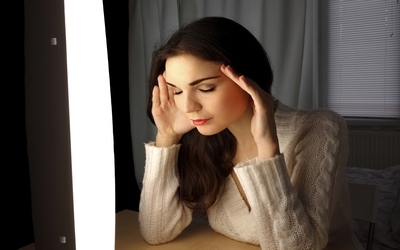Could Light Therapy Improve Seasonal Affective Disorder?
Does winter leave you feeling low and lacking in energy? Do you feel your health starting to slip as soon as the nights draw in? If this is the case, your wellness and wellbeing may be affected by Seasonal Affective Disorder (SAD) which is now a well-recognised condition.
It is thought to be caused by the human body’s reaction to a lack of sunlight that occurs in certain countries in winter. It affects nearly half a million people each winter in the United States alone and is usually only seen between September and April, with symptoms peaking in the darkest months of December, January and February.
The good news is that there is now a lot of help available to sufferers of SAD. There is some evidence that seems to show that the further someone lives from the equator, the higher their chances are of developing the condition.
The good news is that the condition is now so well known that a range of treatments are being developed. Some with the disorder are low in vitamin D, for example, so treatment can include a high dose of the vitamin, and can also involve light therapy.
This disorder can occur in anyone of any age, but it usually starts when someone is between the ages of 18 and 30, even if they don’t recognise it at the time.
Physical activity can help to elevate the mood and reduce the fatigue, but light therapy is one of the primary options available for treating the problem. This usually comes in the form of a therapeutic light box which emits a specially designed light. This is placed close to the sufferer for around 30 to 60 minutes every day. It can also be done through light visors, which the patient wears on their head over their eyes, if they don’t have time to sit in front of a light box.
Natural light is the most effective, however, and research has shown that going for an hour’s walk in winter light can be as effective as nearly three hours of artificial light.


Comments are closed.